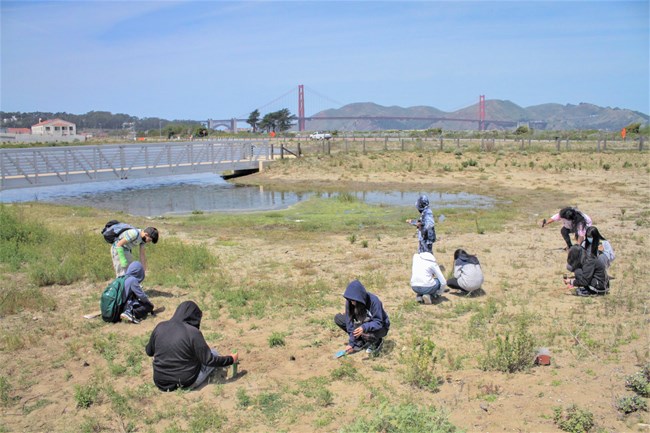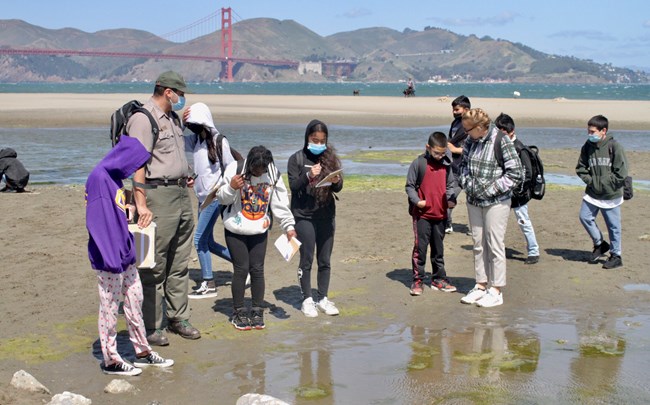|
Currently not accepting applications for the 2025-2026 school year.
NPS
OverviewGrade 6ONLY BEING OFFERED IN THE SPRING AND AS A SELF-GUIDED PROGRAM How does culture influence our relationship with the environment?Living with the Land allows students to explore human relationship with the natural world from the perspective of Ohlone Indigenous knowledge and contrasting western science approaches. By observing the wetland’s past and present, students learn about what wetlands provide and how humans impact this habitat. The area called Crissy Field has changed greatly over time, reflecting the differing values of the people who have managed the land. Today, the restored wetland offers a rich habitat and an abundance of learning opportunities. Living with the Land uses the Understanding by Design framework, incorporates Common Core Standards and Standards for Literacy in History/Social Studies. The program is framed by the essential question- "How does culture influence our relationship with the environment?"

Linda Yamane Program StructureThe Living with the Land Self-Guided Program follows a more flexible three-touch model with optional components and more Teacher-Led instruction:

NPS How to ApplyCurrently not accepting applications for the 2025-2026 school year.
Visit our keyboard shortcuts docs for details
Gregg Castro acknowledges Crissy Marsh as part of the Ohlone ancestral homeland, Yelamu.
|
Last updated: October 1, 2025

